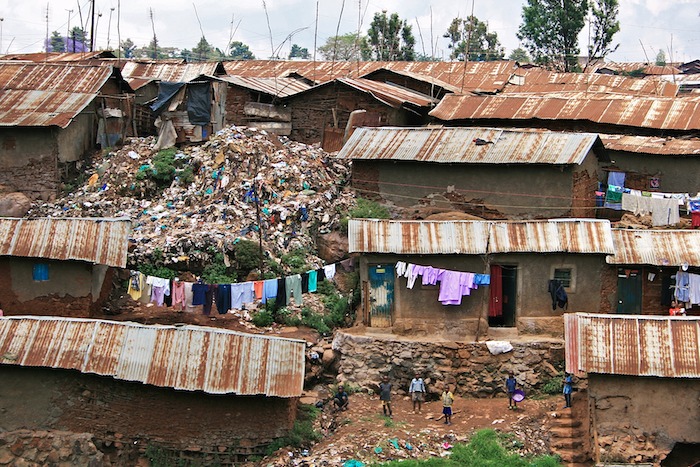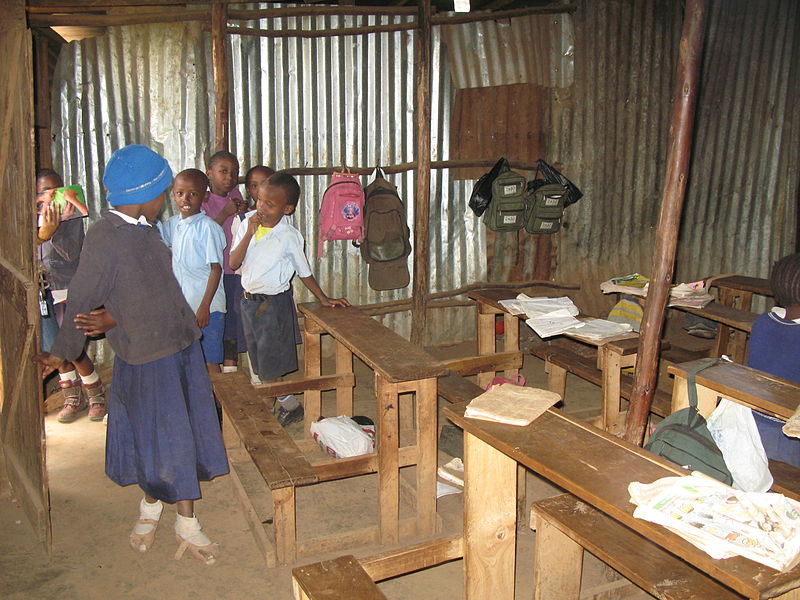by John Powell – Content Editor Global Educator, Palms Australia
Kibera sits just behind a championship golf course in Nairobi, Kenya. It is, perhaps, the largest slum in Africa, with around 250,000 residents. The shacks are constructed with plastic, plywood and discarded metal sheeting. There are no streets, only informal dirt tracks. Kibera is without running water and electricity; and there are no government services such as a school or health centre because Government officials are afraid to visit, let alone to work there. A US-based NGO persuaded the residents to allow them to open a primary school; and offered teachers, a curriculum and some teaching materials. The NGO soon encountered the predictable array of problems: children attended school but many only intermittently; and often perennial hunger meant that they were inattentive or fell to sleep during lessons.

Author Colin Crowley. Licensed under the Creative Commons Attribution 2.0 Generic license.
The NGO approached an international agency to work with them to provide a meal at school with the aim of attracting children to school and enabling them to learn while at school. This conversation led to the exposure of a more fundamental problem: a child who completed the primary education on offer would receive a certificate from the NGO but this would not be recognised by the Ministry of Education or, indeed, elsewhere in Kenya. What to do? The NGO and the international agency met with the Ministry of Education and agreed on an arrangement under which these children would be entitled to sit the same public exam as students elsewhere in Kenya to determine their suitability for acceptance into the national secondary school education system. It was no surprise that the Ministry of Education was encouraging. The proposal incurred no additional cost to the financial authorities, and so they gave their agreement. The last element in the overall package was to secure the financial support of a private sector donor to fund the provision of the meals. The donor was much attracted to the design and ambition of the proposed program; and their concerns about how the funds would be managed was assuaged because these were to be directed via the international agency and not the Government.

Author SuSanA Secretariat. Licensed under the terms of the cc-by-2.0
The heart and soul of the program was an NGO willing and able to bring the wherewithal to provide slum children with a sound primary school education; and to seek out creative partnerships with others who shared those same aspirations. Yet these initial aspirations grew with their engagement with an international agency and, subsequently, with the Government. These children could now enter the national secondary school system. A secondary education offers a better prospect of employment and a higher paying job; and this employment would be outside of the Kibera. In short, it offered the prospect of a new life and the chance to escape poverty.
NB: The Government and international partners are now engaged on a major upgrading of Kibera. That said, the description of Kibera is accurate at the time the program was initiated in the early 2000s. Watch the linked video for a depiction of Kibera in 2006 titled “I want to be a pilot”.
Feature image: Slum Kibera in Nairobi, seen from above authored by Schreibkraft. Licensed under the Creative Commons Attribution-Share Alike 3.0 Unported license.
